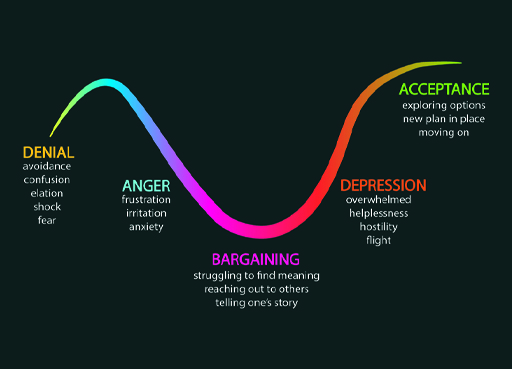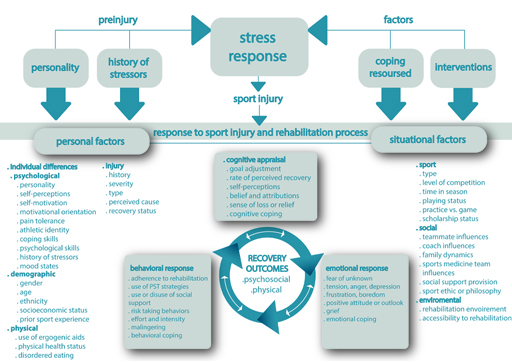2 Predicting how individuals will respond to sport injury
For those supporting Lois and Travis through their injuries – such as the coach Wilma, personal trainer Melissa and physiotherapists – it would be useful to have an understanding of how an individual might respond to injury and why. This may help them to plan and support Lois and Travis better.
This is where models of psychological response to injury are beneficial. They provide a framework to aid our understanding of how individuals respond to injury and the impact this might have. There are two groups of model that you will explore in this course:
- grief response models, and
- cognitive appraisal models.
You will look at one example of a grief response model (Kübler-Ross, 1969) and two examples of cognitive appraisal models (Brewer, 1994; Wiese-Bjornstal et al., 1998).
Activity 3 Models of psychological response to sport injury
Watch the video below which introduces three models of psychological response to sport injury and then answer the following questions.
Note: The models shown in the video have been produced as images below – they will be useful for you to look at while you watch the video and you will also refer to these in the next activity:

Transcript: Video 3
Now answer the following questions:
- What are grief response models?
- What are cognitive appraisal models and how do they differ from grief response models?
- What are the differences and similarities between the two cognitive appraisal models examined in the video?

Discussion
- Grief response models assume that injury constitutes a form of loss to the individual and thus the onset of a grieving process. They suggest that an individual will respond to injury in the same way in which people respond to other significant losses, such as the death of a loved one (Brewer, 1994; Evans and Hardy, 1995). This involves progressing through a series of sequential stages. The number of stages varies from model to model, but in Kübler-Ross’s (1969) Grief response model – which has been most commonly applied in the sport injury psychology literature (Walker et al., 2007) – there are five stages.
- In contrast to grief response models, cognitive appraisal models take individual differences into account. They do not assume that everyone will react in the same way to injury. Instead they suggest that how an individual interprets or appraises the injury (cognitive appraisal) will determine their psychological reactions. This allows two people to exhibit entirely different psychological responses to the same injury. Therefore, it is the perception of an injury that affects psychological responses, rather than the injury itself.
- Both cognitive appraisal models suggest that how an individual interprets or appraises their injury is influenced by two key variables – personal and situational variables – and that cognitive appraisal influences emotional and behavioural responses to injury. The main difference between the models is that the Integrated model of psychological response to sport injury (Wiese-Bjornstal et al., 1998) is a more comprehensive model – this model also incorporates psychological factors that increase the risk of injury. The Integrated model has been widely applied within the sport injury psychology literature (Brewer and Redmond, 2017).
Next you’ll apply these models to the case studies.



